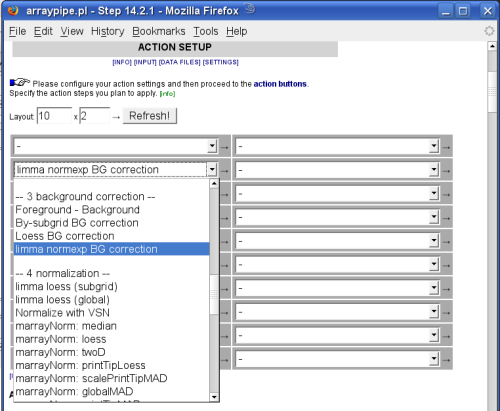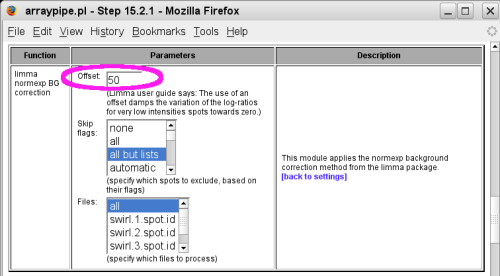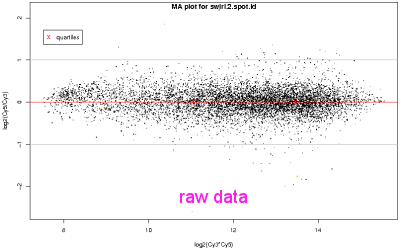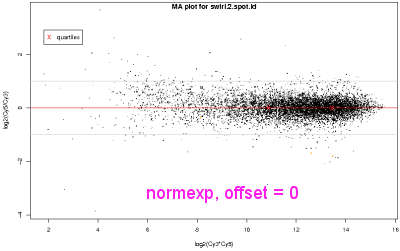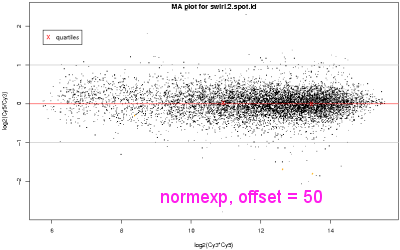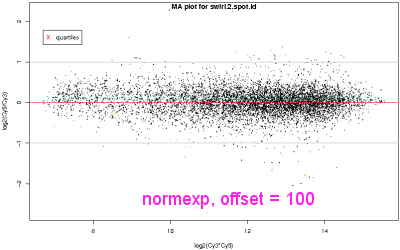ArrayPipe Online Documentation
[← previous] [up ↑] [next →]
Limma's normexp background correction
With 'normexp' a new background correction method has been implemented from Bioconductor's limma package:This method offers a very important advantage over other background corrections: It doesn't produce negative values. This means that you don't loose any spots, even if very high background signal was measured. Additionally it stabilizes the variabilities of the log-ratios as a function of intensity, which makes it particularly suitable to be used in connection with limma's eBayes moderated t-test (see statement by author Gordon Smyth.
An offset parameter allows the user to apply some dampening to spots with very low intensities:
This reduces the splay often seen at the left end of MA plots.
Below are four MA plots of a slide from the swirl data set. The first
shows the raw data, the next three were produced after
background-correction with normexp using offsets of 0, 50 (default) and 100:
You can see how the fold-changes at the low intensities are blown up from background correction without dampening and how increasing the offset parameter reduces this effect.
An article in Bioinformatics describes how the normexp+offset methods was found to give the lowest false discovery rate overall compared to seven other popular background correction methods.
Note: It is advisable to always look at MA plots after normexp
background correction to make sure the data has not been distorted!
[← previous]
[up ↑]
[next →]
Home
 last modified $Date: 2007/08/27 14:02:03 $
last modified $Date: 2007/08/27 14:02:03 $
for questions or remarks e-mail karsten_hokamp@sfu.ca.
